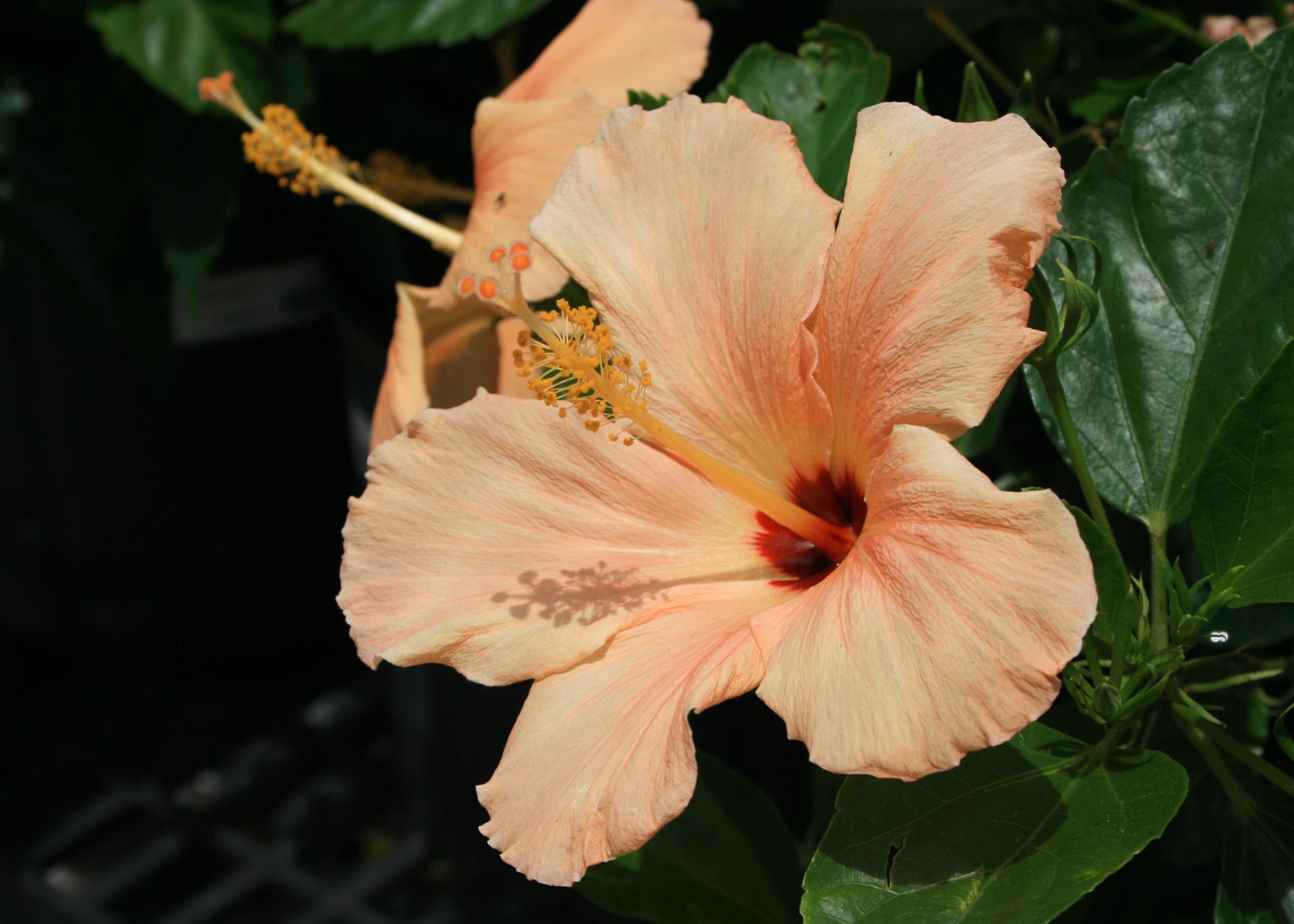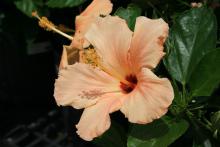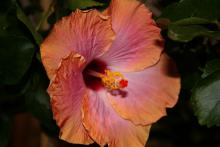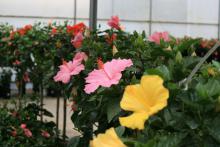Information Possibly Outdated
The information presented on this page was originally released on July 20, 2020. It may not be outdated, but please search our site for more current information. If you plan to quote or reference this information in a publication, please check with the Extension specialist or author before proceeding.
Tropical hibiscus makes late summer color splash
I’m staying with the theme of second summer this week because I was out in my landscape early this morning taking care of a task that was hard to do but inevitable.
You see, every year at this time, my beloved Vista Bubblegum Supertunias have begun to fade and need to be removed. I don’t wait until the bitter end; as a result, there’s a long pile of pink debris awaiting pickup by the city yard trash truck.
While my containers sit idle waiting for the next planting, I still have color in my landscape from hibiscuses.
For second summer, I really like the color splash that tropical hibiscus provides. I think these flowers are some of the most dazzling that I grow each year in my garden, and they create interest with their flashy gaudiness.
To a plant geek like me, one of the most interesting features of tropical hibiscus flowers -- besides their size -- is the arrangement of their pistils and stamens. The pistil is the center structure surrounded by the swirl of stamens resembling a yellow bottle brush.
The various selections of tropical hibiscus feature colors ranging from bright yellow to pink, red and white. The foliage is dark green and glossy, and it provides a nice background to display the colorful blooms.
Some of the flashiest tropical hibiscuses on the market are the Cajun hibiscuses, especially the blends. I really like the selections that have a cool gray color in the mix. The colors can seem almost impossible, like random, complex combinations from a box of color chips.
There’s one thing to remember for all tropical hibiscuses -- the gorgeous flowers only last for a single day. It can be so disappointing! But not to worry: Tropical hibiscus produces flowers almost continually from late spring to fall.
As I’ve mentioned in the past, I grow nearly everything in big containers. There’s a couple of reasons for this growing strategy. First, big containers hold more water and help keep the root system consistently moist, even on the hottest summer day.
And second, maintaining consistent root zone moisture is key for tropical hibiscus to flower through the season. Drying out quickly turns off the flowering and causes flower bud drop. It also delays future flowering.
For the best flowering, be sure to plant tropical hibiscus where it gets at least 6 hours of full sun every day. This will keep the plant more tightly branched and will intensify the colors.
Fertilization is another key to maintaining the flowering of tropical hibiscus. The flowering process is very energy-intensive and relies on consistent nutrition. I always use slow-release fertilizer at planting and then water-soluble fertilizers as I water through the second summer season.
Most years, tropical hibiscuses are not winter hardy, even along the Gulf Coast. So if you grow them in a container, you can move your tropical hibiscuses inside a garage or shed for winter protection ahead of the arrival of cold weather.
But even if you grow them strictly as an annual and buy new selections each spring, these plants reward the home gardener with many months of beautiful flowering. I think that’s a great return on investment.





